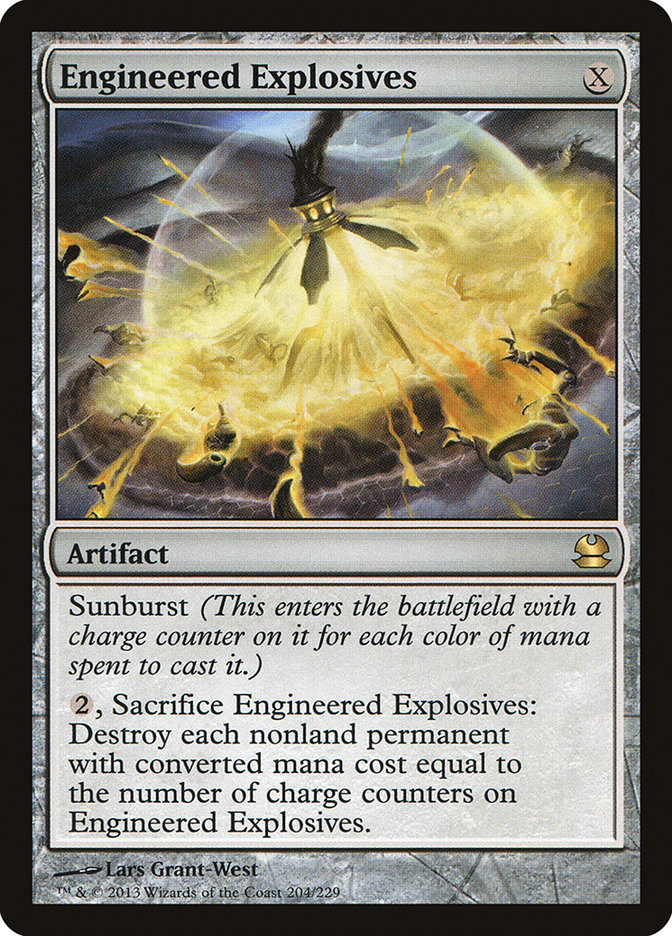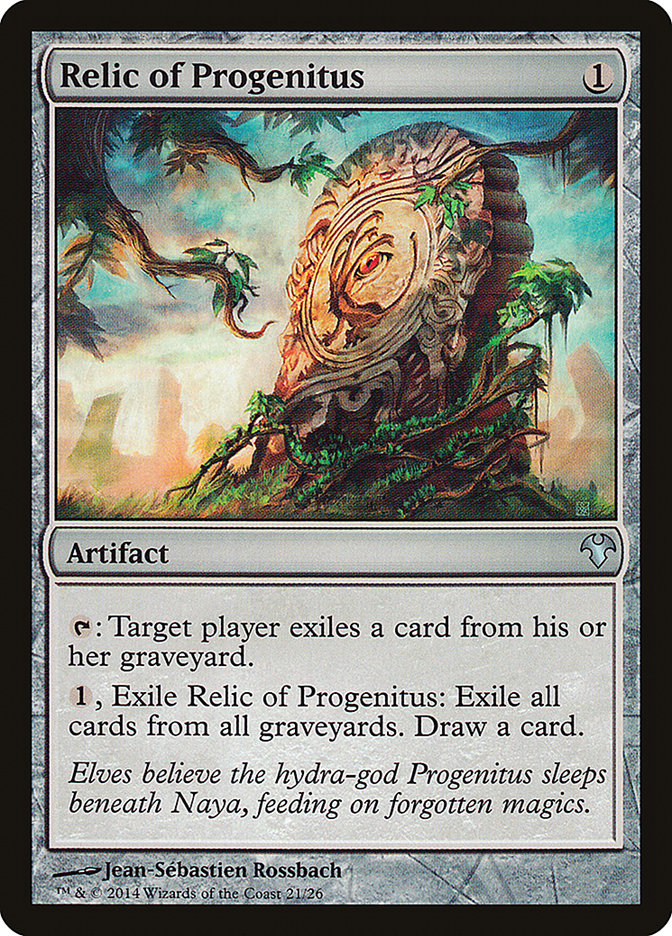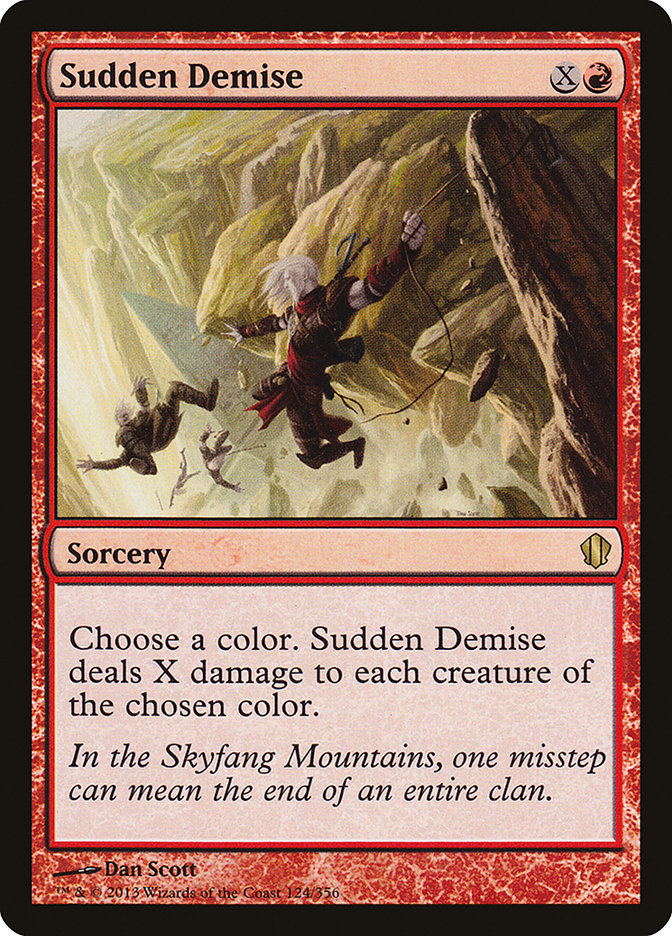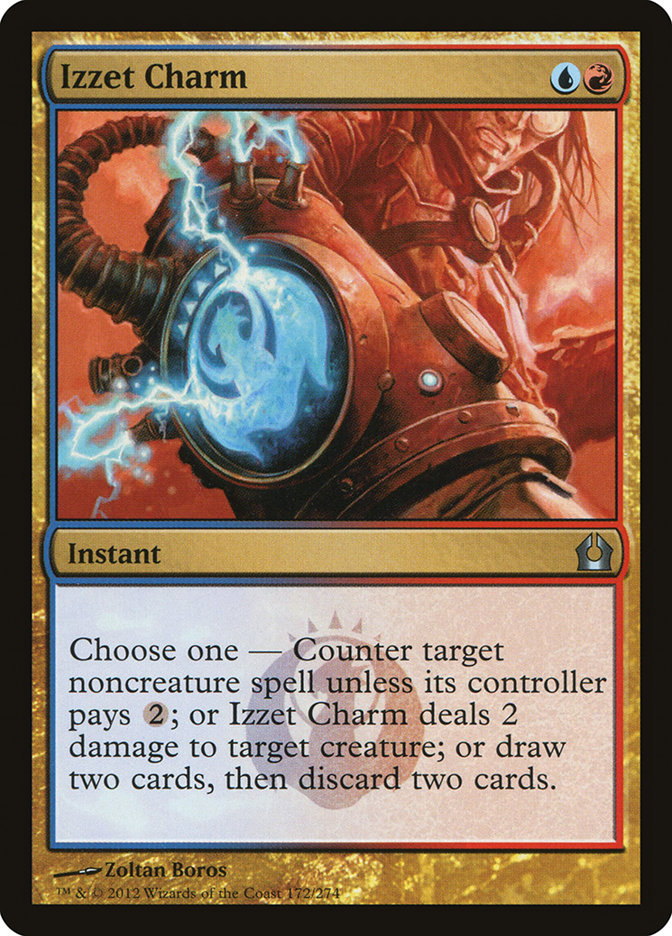The sky is blue, grass is green, winter is here, and Stoneforge Mystic is still a great card. It’s getting harder and harder to play a control deck when
the premier aggro deck is playing sixteen lands and Ancestral Recall alongside powerful heavy-hitting under-costed creatures. However, Stoneforge Mystic by
itself provides a great shell to start with. I knew that with Young Pyromancer gaining popularity that playing Batterskull was where I wanted to be.
My first thought was to play a control deck that could utilize Dig through Time. The first thing you may be wondering is why I didn’t just play Miracles.
My concern with that deck was two-fold. First, the Counterbalance + Sensei’s Divining Top lock is very slow to set up and takes some time to lock your
opponent out. Delver decks have sped up significantly and Treasure Cruise allows them to make a bunch of one-for-one trades early since the deck refills
its hand so easily. The other concern was that it takes so long to kill your opponent that they have enough time to sit around and find the cards they need
to win the game. Fortunately, while I was brewing a deck, Magic Online user SVKNOE 4-0’d a Daily Event with a deck I found to be quite appealing:
Creatures (2)
Planeswalkers (3)
Lands (21)
Spells (35)

There was a lot that I liked about this deck, but the card that stood out to me the most was Dig Through Time. I remember at the first Open in New Jersey
where Khans was legal, I sat next to Reid Duke who was playing Miracles and noticed he had a Dig in his opening hand. I then watched him use Dig to
maneuver his way through his deck. I was enamored with the thought of playing Dig Through Time, but never found a great shell for it. When I saw this
control deck online, I thought this Jeskai control deck that was popping up had to have some merit, even if I wasn’t happy with all of the choices in the
deck. I put the deck together with some of my own choices and headed out for SCG Columbus.
My first priority was to get more testing in and make sure I got to battle against U/R Delver. During testing against Andrew Tenjum I found myself losing
over and over again. When you have a great start and still can’t beat the best deck in the room, something has to change. I did notice having Batterskull
was awesome, but Engineered Explosives was too slow. While Explosives has a lot of applications, it just didn’t do enough. More specifically, without a lot
of targeted removal, the Academy Ruins and Engineered Explosives plan was just too slow. Playing twenty lands didn’t contribute to this control plan
either. So I tried reverting to Stoneblade. The Stoneforge Mystic plan was great in testing when I did happen to draw it, and Batterskull is a great way to
fight all the Delver decks. Unfortunately, I wasn’t exactly sure how to go about it. Luckily, Joe Bernal already did so I took a look at his skeleton and
built a similar version.
I have always had a lot of success in Legacy with Stoneblade decks and part of the reason is that it’s so customizable. The great part about Stoneblade is
it’s essentially a Barbie doll. It’s always going to look very similar, but you can accessorize it how you want. It comes in several different colors, and
you can dress it to your very own style. You could play a red flavoring for Lightning Bolt and Red Elemental Blast to have a better aggro and blue match up
or a green style (like we saw Sam Black and Reid Duke play at Grand Prix Washington DC) with ramp to make you a turn faster and less prone to Wasteland.
The most popular version recently has been Deathblade. This is very similar to an Esper style shell with Deathrite Shaman as a way to play a faster game
while having a powerful clock and a maindeck answer to graveyard strategies.
This is where I ended up:
Creatures (9)
Planeswalkers (2)
Lands (16)
Spells (33)

While Joe decided to play Treasure Cruise, I realized the potential of Dig Through Time in the deck. Since you’re playing some of the best fair cards in
the game, you want to see them with some consistency. Brainstorm goes a long way towards making your deck consistent, and Dig Through Time is just another
way for you to find your great cards and put you back in a game or put the game away for you. However, Joe made some good points about Cruise, and I
decided to try one in a flex slot to see how it was. If you’re playing a Delver or Burn deck, Treasure Cruise is the way to go for sure. However, if you’re
playing a Stoneblade deck, you want the selection from Dig Through Time. Being able to find key sideboard pieces post-board and drawing two cards you want
instead is more important than the raw card power that Treasure Cruise gives you. Being able to be reactive against opponents and select the right two
cards for the job is what really gives the nod to Dig Through Time.
I realized that with the GP fast approaching next week I couldn’t be too unsure of my deck choice, so I decided to use this Open as a test for the deck.
Playing the deck last weekend really reminded me of the old U/W Stoneblade decks from a couple years back. You have a lot of powerful cards, great removal
spells, and a close to unbeatable endgame.
Although I felt prepared for U/R Delver, I only played it once during the tournament which I thought was quite odd since the tables surrounding me had a
multitude of U/R Delver decks. If you aren’t prepared for this deck for the Grand Prix, it will beat you. Regardless of whether or not you play a deck once
or more, not respecting it will not help you win the tournament. However, that’s one of the great things about Legacy. A deck can be as popular as U/R
Delver has become and yet you only play it once in a tournament.
During the Swiss rounds, I got the chance to play against an Abzan deck with maindeck copies of Spirit of the Labyrinth; a Metalworker strategy; Burn with
Treasure Cruise; Sultai Delver; Goblins with sideboarded Spirit of the Labyrinth; Sneak and Show; and the pseudo mirror against Joe Bernal. As Ari Lax
mentioned in his article this week, Dig has the awesome ability to dodge
cards like Notion Thief and Spirit of the Labyrinth as hate bears so the two times I played against it felt really good to be able to side step all my
opponents’ hate.
Throughout my tournament experience, I learned how powerful Dig Through Time was. Every time I cast it I could hear my opponents audibly sigh, regardless
of the board tate. Dig Through Time allows you to push garbage to the bottom of your deck, which can help mitigate flooding, mana screw, or clear a
Brainstorm
I also feel Jace has gotten a lot better recently. That may sound really weird since all the decks have lowered the floor and sped up the format, but in a
deck like Stoneblade where you’re slowing the game down, Jace does a lot of work. It’s a difficult permanent for a lot of decks to deal with, and you will
almost always get value out of it. Against a deck like Sultai, a resolved Jace can be lights out. Jace also has a lot of use against any
Trinisphere/Chalice of the Void decks you may come across.
Moving forward, I would absolutely cut the Treasure Cruise for the third Dig through Time and make room in the sideboard for a Wear//Tear. One of the
issues I see that players have is they build a sideboard to beat the most popular deck and skimp on ways to beat other decks that exist in the format. We
can see this most often when Dredge starts picking up a lot of steam. People skimp on graveyard hate and get taken out by Dredge. Dredge is still powerful
enough to fight through a lot of hate, but the matchup is incredibly difficult for most decks without any way to fight it.
Unsurprisingly, Containment Priest was as good as advertised, and I would play no less than two moving forward in any deck playing white. If you plan on
playing this deck, I would suggest doing what you need to do to secure two Priests for yourself. The power this card has against Elves, Dredge, Aether
Vial, Show and Tell, Sneak Attack, and Reanimator is quite absurd, and I expect this card to become a staple very quickly.
I think overall, the deck is very powerful as Stoneblade decks have been in the past. You have a great fair matchup since you have seven to nine maindeck
removal spells alongside a great endgame in Batterskull and Jace, the Mind Sculptor. With so many counters in the maindeck, you also have a very solid
combo match up. The sideboard also leaves you a lot of room to fix those matchups.
I do know that not all of the card choices are things you’re interested in. Some of the cards may feel out of place or fit my playstyle more than yours.
This is where we come back to that customization; let’s take a look at some of the cards you could consider playing in the deck for the Grand Prix in New
Jersey this weekend:
This card has so many applications it’s hard to not to want to play. It isn’t as efficient as Lightning Bolt, but being able to split damage between two
elves or a Young Pyromancer and a token can be very useful in a lot of situations. There’s also the off chance you play against Shaheen Soorani and are
able to snag one half of a Lingering Souls. The great part about it is you can cycle the Ice part to tap a Batterskull equipped creature or even a land in
the upkeep to prevent your opponent from casting a Jace, the Mind Sculptor or other troublesome spell.
Engineered Explosives has always had the issue of being a 1 or 10 card. When it’s bad it’s almost embarrassing, but when it’s good it’s one of the best
things you can be doing. Part of the issue with this card is its very mana intensive, and something as simple as a Daze can Time Walk you. On the plus
side, it’s great at clearing out Young Pyromancer tokens or troublesome permanents that cost three or less. The deck can struggle with an early Tarmogoyf
or a True-Name Nemesis, and Explosives gives you a great weapon to fight them.
This card as a one-of was an all-star for me all day. I would strongly consider playing another one as it’s great at keeping your opponent in check while
still allowing you to make your Dig through Times cost less.
This Commander all star (suggested by one handsome gargoyle Andrew Boswell) can act as a one-sided Wrath. Its costs the same amount to kill a bunch of
Pyromancer tokens as Pyroclasm, but that has the downside of not being able to kill Swiftspear or Deathrite Shaman. Perhaps Pyroclasm is the best at what
it’s doing, but being able to keep your True-Name Nemesis or Stoneforge Mystic around might put this card to a better place.
This card has been one that I’ve toyed around with for awhile. Although it costs two mana and forces you to always have a red source, the ability to be a
Spell Pierce, a Shock, or fuel for your delve spells makes this card quite attractive. Of course, it suffers from the drawback of being able to be either
Hydroblasted or Red Blasted and costing two mana. Fortunately, it plays into the deck’s style of playing draw go, and if your opponent is sitting around
waiting for you to make a move they may find themselves on the back foot in short order; Izzet Charm can help facilitate that.
Overall there isn’t much I would change about the deck. The skeleton is set in place, and it felt very smooth throughout the ten rounds I played it in.
Sometimes, when something works, the best thing you can do is to not change the parts that are working.
I’d like to take this section to thank Andy Boswell, Anthony Lowry, and Lindsay Burley for being so supportive during the entire tournament. They made sure
I didn’t get too far ahead of myself, and made sure I was keeping hydrated and fed. Magic is about having fun, and this tournament was a blast from start
to finish. My top 8 opponents all wanted to have a good time, and we all enjoyed our matches. I’m looking forward to Grand Prix New Jersey and hoping I can
run back a 9-0 record day 1 like I did at the Legacy Grand Prix in DC.






